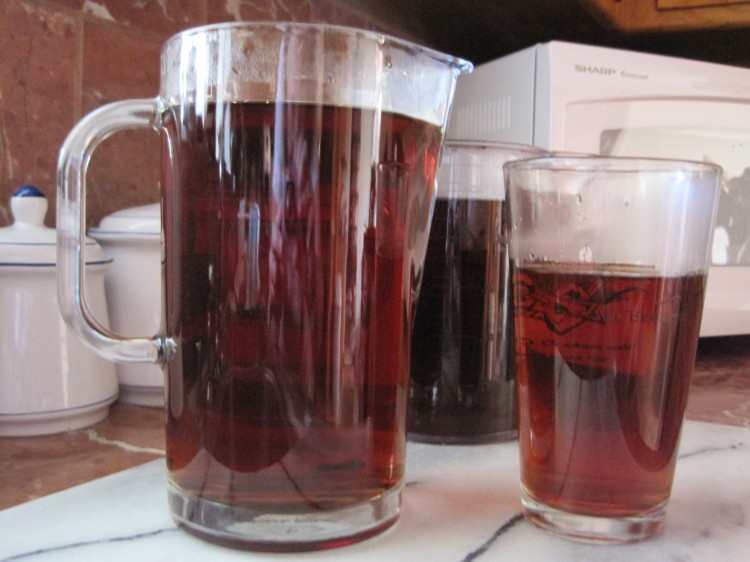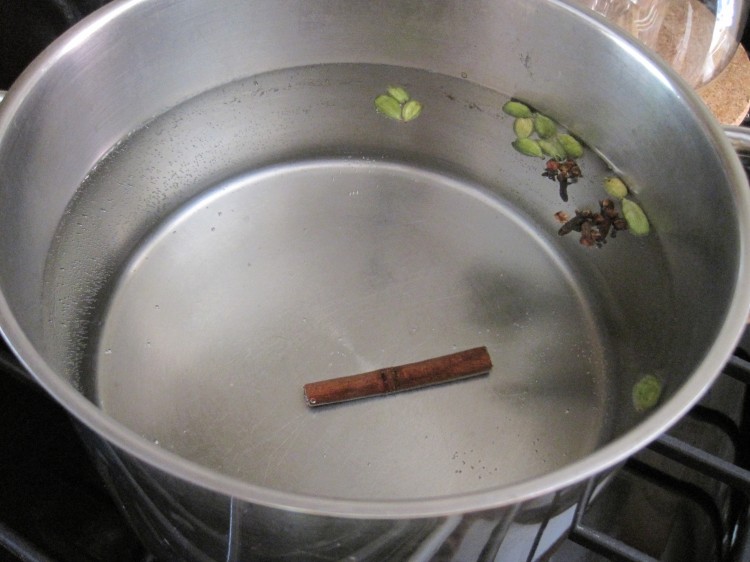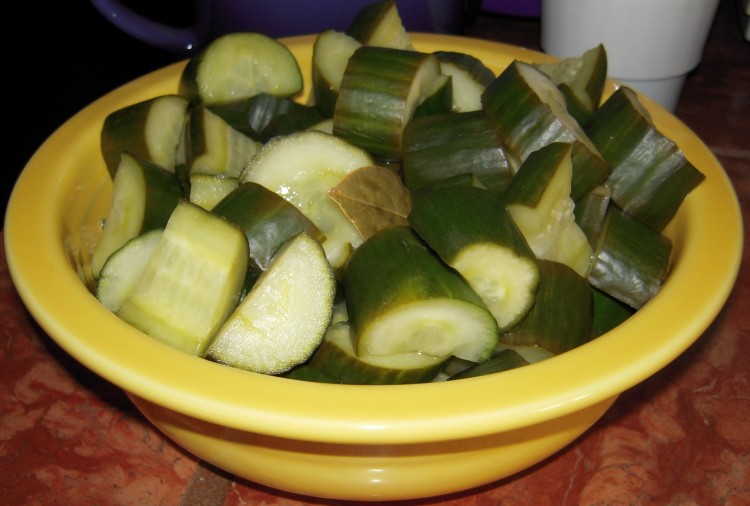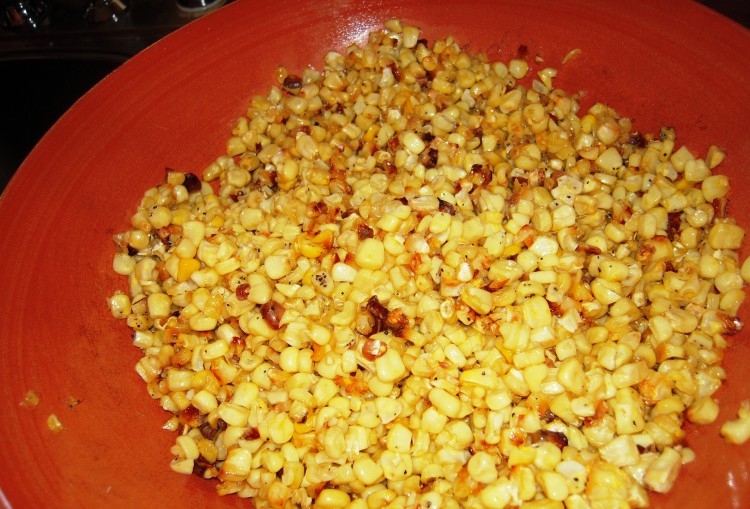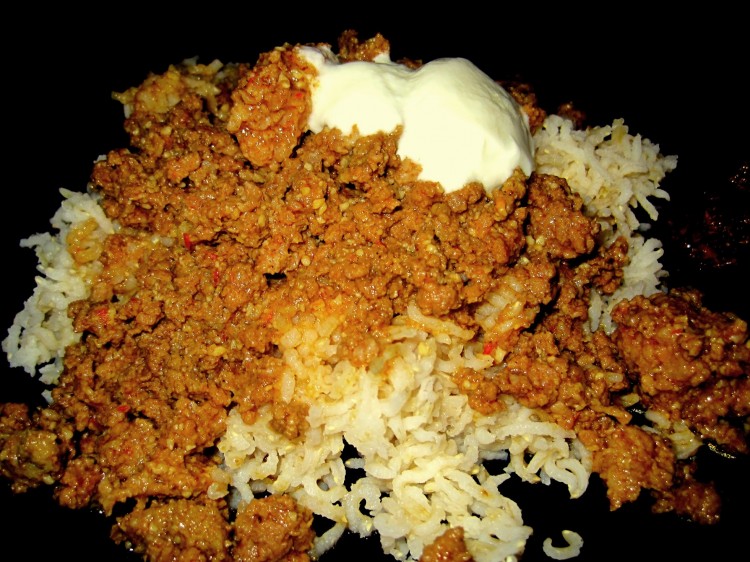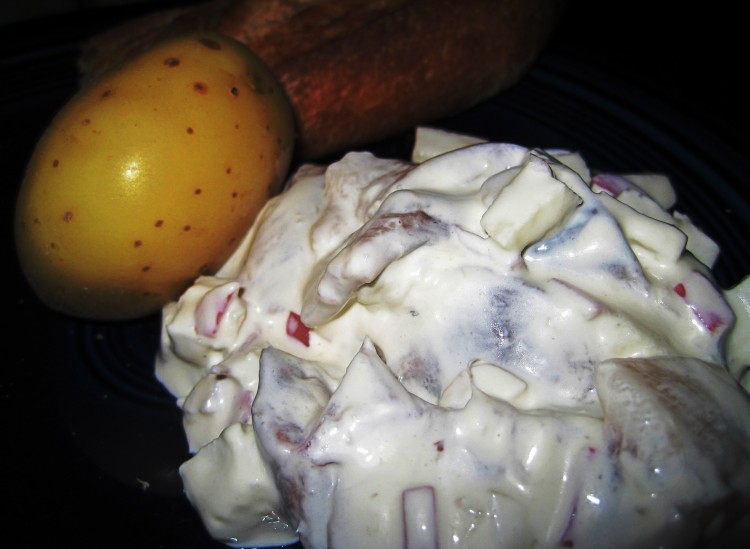
Renate’s Herring Salad in Northern German Style
My Mom just came back from a long trip to Germany, where she’s from, and has been raving about one of her favorite dishes: herring salad.
I miss herring salad. To make it properly in the US borders on impossible, though.
Herring, a fairly strong, oily (and Omega-3-rich!) fish from the North Atlantic and North Pacific oceans and the Baltic Sea, is a way of life in Northern Europe. Not so much here. Much of the herring consumed in the US is of the appetizing variety that’s part of (Ashkenazi) Jewish cuisine. You know what I mean: herring in cream sauce, herring in wine sauce, chopped herring. If you’re not connected to a hard-core herring eating community, chances are you don’t know Matjes from Buckling.
For the record, Matjes herring are young, mild herring that run once per year in early summer. A Buckling is a hot-smoked herring. The head and insides are removed, but not the roe. My Oma (Grandma) loved these, and used to talk about them all the time, describing their savoriness in full glory. Loosely like a kipper.
If you hear Germans talking about “green” herring (grüne Heringe), they mean herring straight out of the water – nothing done to them yet. These are often fried whole in butter. Fried herring are called Bratheringe. The German language is famous for producing compound words from multiple nouns, verbs and adjectives. Here, a form of the verb “to fry,” or “braten,” is simply now part of the noun. You may not care, but I figure I’d mention it, along with Straßenreinigungsgebühr, or “street cleaning fee.”
Among the ways Europeans deal with herring, a popular one is simply curing and preserving with salt in a barrel. The fish are then soaked in water to rid them of excess salt and used in various recipes, like herring salad. They are not cooked – just cured. It may rock your world to know that the jarred Vita Herring you’ve been buying at the supermarket all your life are not cooked….by heat, anyway. If you eat this stuff, go ahead and have ceviche. Hell, go ahead and take the next little leap to sashimi. Many things, both good and bad, are arrived at incrementally.
It is very difficult to find the aforementioned salt herring in the US. The only place I know of in the SF Bay Area that carries the real deal is Nordic House, in Berkeley. They actually dig the herring fillets out of a barrel in front of you. Another option is an on-line outfit, like GermanDeli.com, but the shipping and handling charges are outrageous.
Most of the Euro and Euro-style herring sold in the US is pickled and in jars or canned and in some kind of mustard or tomato sauce. You don’t want any of that stuff for this herring salad. Try to come as close as possible to the right thing. Keep reading.
To further complicate matters, I like my herring salad made with young, tender, Matjes herring – which are impossible to come by here in a salted state. When you see them at all they are in a marinade. When looking for neutral-tasting Matjes herring for this salad, be especially careful with that sold in a marinade — such as the 1 kg containers of Swedish Matjes herring available at Nordic House — because there is often lots of dill present. Although you may be told you can “soak” the dill flavor out, you can’t. Plus, there is sugar that will remain after soaking.
After trial and error I found a great product that is available in many US cities and via mail order – much easier to come by than barrel-cured herring: Richter Matjes herring fillets in canola oil. There is no marinade. This is just salted Matjes herring packed in oil. All you need to do is rinse and dry, which will cut down on the salt. It may still be too salty for you, but you’ll never know if you don’t try it. If you live in the SF Bay Area, you can get this at Berkeley Bowl West, across from the meat counter. UPDATE on 1/29/13: I have not seen the Richter Matjes at Berkeley Bowl West for a few months now.
The salad I make from these herring passes muster with my Mom, so you know it’s good. Not only has she eaten a sea of herring in her lifetime, she’s also brutally honest about what she likes and doesn’t like. Feelings don’t always seem to factor in.
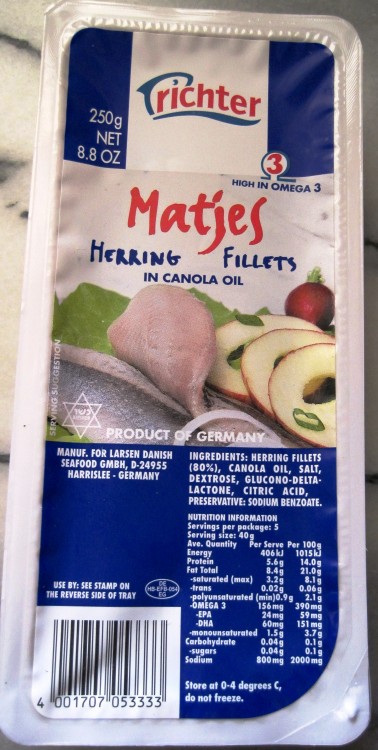
In Germany, your basic herring salad includes only a few ingredients, and you can even make the “salad” with whole fillets, which are then served, sauce and all, with little steamed or boiled yellow-fleshed potatoes. Sometimes the sauce will be made a bit runny when prepared this way.
If you make the salad with chunks, you can serve it on little crusty rolls or with said potatoes.

In Southern Germany, beets are added. We hail from North Germany, so we don’t include them.
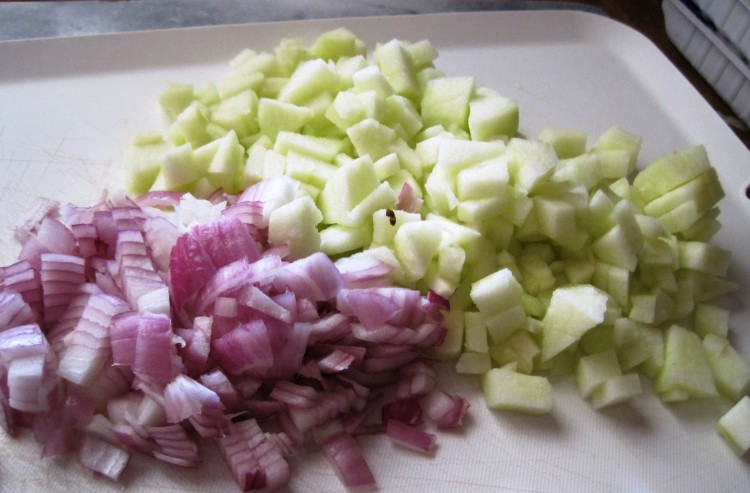
Forget the Sauerbraten, which I never saw any of my relatives eat and I’ve only had once or twice, and try this. This is what Germans really eat at home all the time. Believe you me, this will be interesting to you if you never had anything but Vita.
If you hate it, send me a recipe from your homeland that you think an American won’t eat and I’ll try it. I eat everything but kidneys and custard.
Renate’s Herring Salad (Renate’s Heringssalat)
500 grams Matjes herring (a little over a pound/2 Richter 250 gram packs)*
1/2 cup sour cream
1/4 cup good mayonnaise
1 Granny Smith apple, peeled, cored and cut into small dice
1 small red onion, chopped (not too fine)
Black pepper
Perhaps a little heavy cream or half and half
1). Open containers of herring in sink and transfer fillets to colander. Rinse under cold water well and dry very well before transferring to cutting board.
2). Cut herring fillets into chunks (something like 4 – 6 pieces per fillet, depending upon size).
3). Whisk sour cream and mayo together in a glass or earthenware bowl with a couple grinds of black pepper.
4). Fold in apple and onion.
5). Fold in herring.
6). Cover and place in fridge for an hour.
7). Check sauce situation. If too thick, you can fold in a little heavy cream or half and half, but don’t thin too much.
8). Serve or set back in fridge until you do.
Allow to sit to marinade a bit.
*If you use salt-cured, barrel herring, you’ll need to soak it at least a day in a goodly quantity of water, changing the water often. Dry it well. Action here will depend upon what you buy. If you are lucky enough to find salted Matjes herring in bulk, it most likely won’t be as salty as mature barrel herring, but your mileage may vary.
